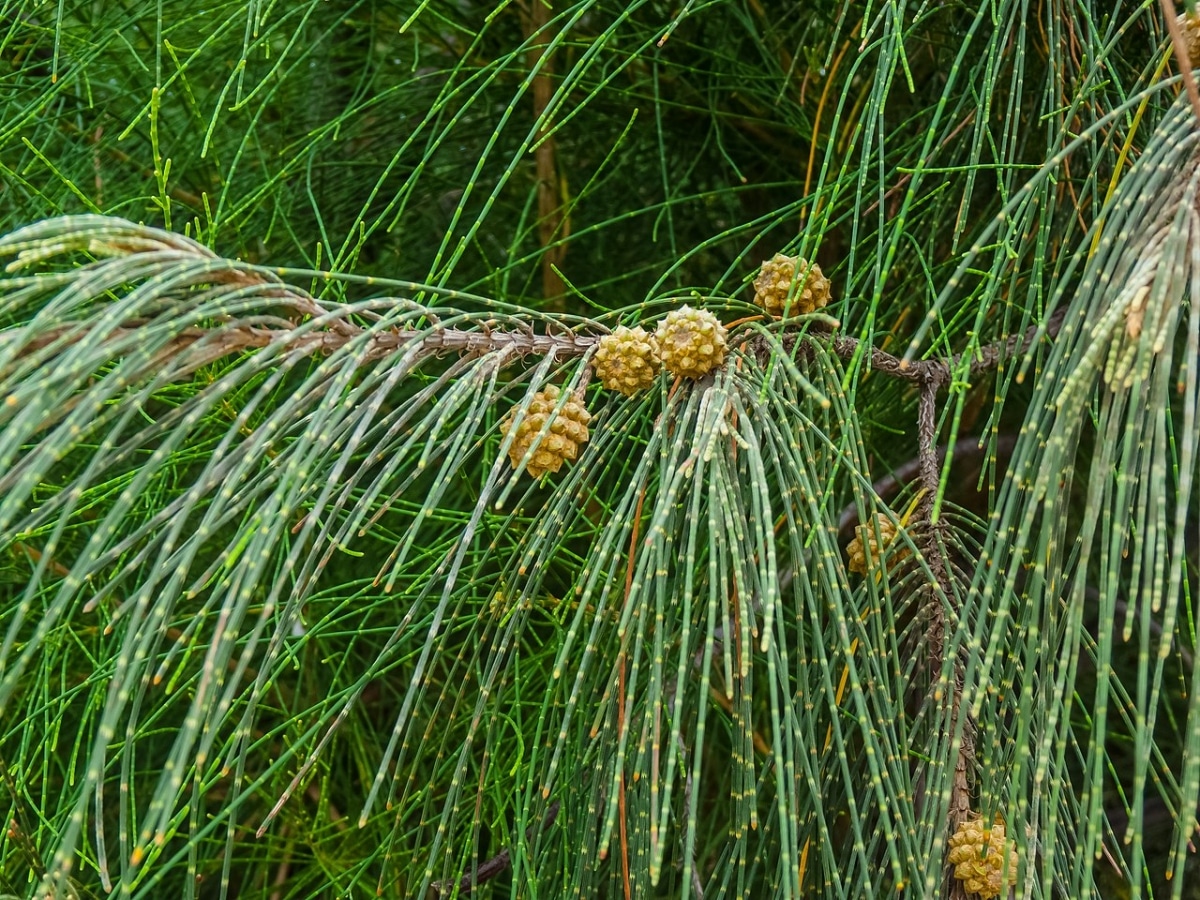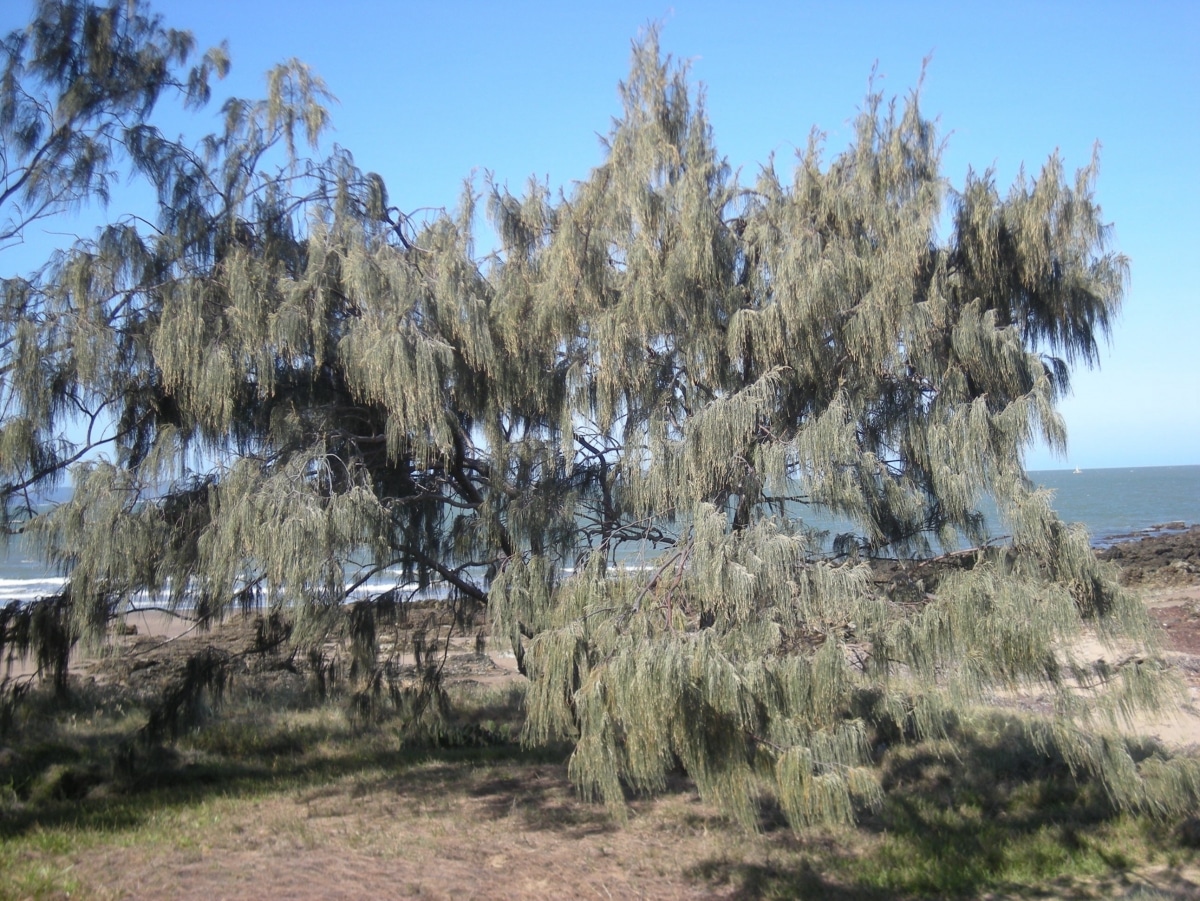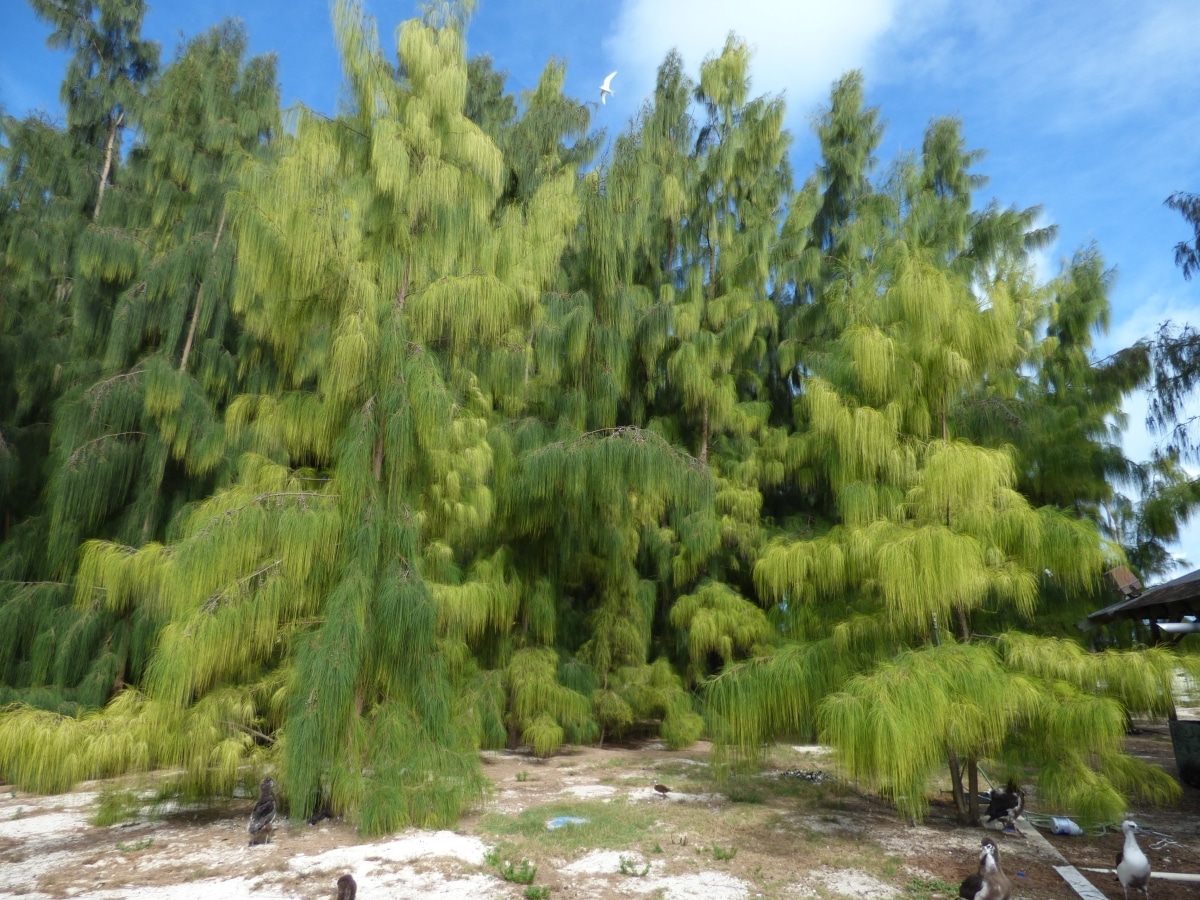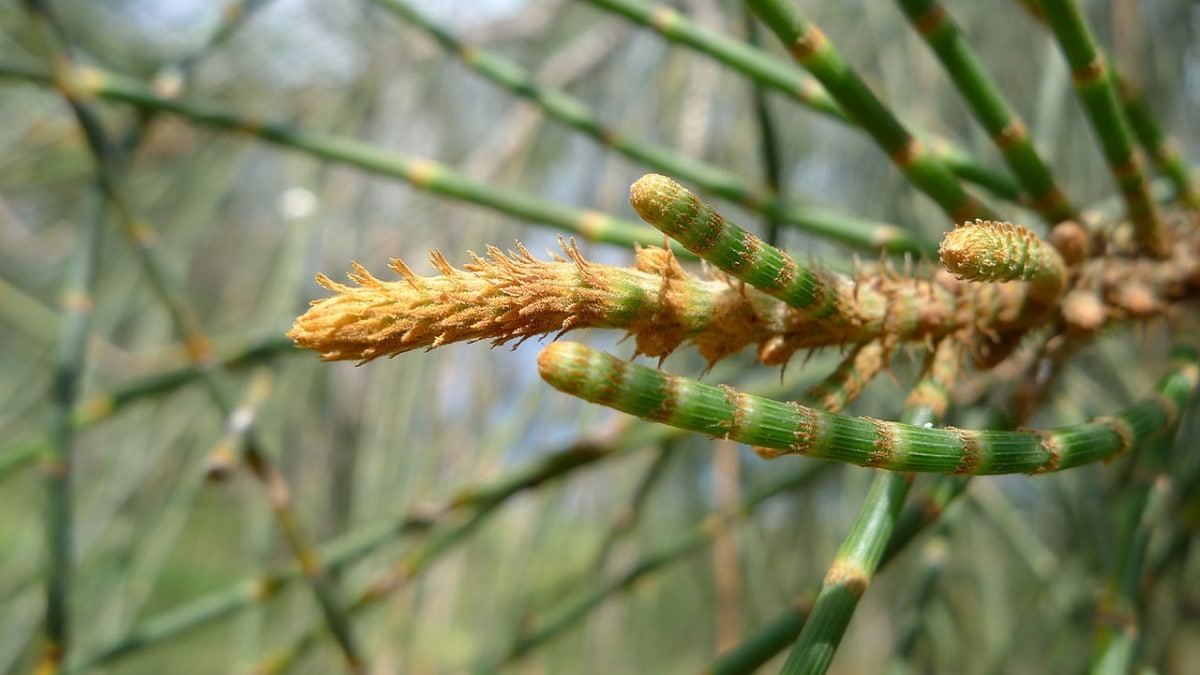
Image - Wikimedia / John Robert McPherson
Casuarinas are plants that look a lot like pine trees, in its size and also in having a highly developed root system, but in reality they are not related. In fact, they have characteristics that make them unique; and that's not to mention that our protagonists are not affected by the processionary, a plague that causes very serious damage to the plants of the Pinaceae family.
But if there is something in which they are similar, it is in their rapid growth and their good resistance to drought, which is why many plant a specimen in their gardens.
What kind of tree is the casuarina?

Image - Wikimedia / PePeEfe
The Casuarina it is an evergreen or semi-evergreen plant that, depending on the species, can be a tree or a shrub. It is native mainly to Australia, but is also found on some nearby islands. The genus is composed of about 15 different varieties, which develop elongated and very fine leaves, similar to pine needles.
The trunk tends to grow straight, and is not very wide (it usually does not exceed 50 centimeters thick). Roots are very long and strong, so it is important that they are planted away from swimming pools, pipes and others.
The leaves are actually scales that sprout from the green stems, the latter being the main ones in charge of carrying out photosynthesis. Its flowers lack ornamental value, since they are very small and inconspicuous. The fruit instead is a false pineapple or a false cone that contains several seeds., which are samaras up to 8 millimeters long (a samara is a seed with a wing).
How long does it take to grow the casuarina?
Casuarina is a fast growing tree, but this only happens when conditions are good. If they are, then can grow at a rate of about 50-70 centimeters per year more or less; otherwise, it will go much slower.
How many years can a casuarina live?
The life expectancy of the casuarina around 50 years. Of course, it is not much if we compare it with that of other trees, such as oaks, for example, but we must bear in mind that, in general, trees that grow quickly also begin to flower and bear fruit at an early age, since their life is relatively short, so they should not be wasted in order to produce as many viable seeds as possible.
types of casuarina
Of the more than 10 types that have been described, the most cultivated are only the following:
Casuarina cunninghamiana

Image - Wikimedia / John Tann
It is a tree native to Australia, called river oak or Australian pine. It can measure up to 30 meters in height, and reaches a crown of up to 5 meters wide at its base. Cece fairly quickly, and does not require any special care.
Casuarina equisetifolia

Image - Wikimedia / Ethel Aardvark
La Casuarina equisetifolia It is a native species of Australia, Malaysia and Polynesia. Like C. cunninghamiana, can reach 30 meters in height. Its trunk tends to branch out a short distance from the ground.
Glaucous Casuarina

Image - Wikimedia / Forest & Kim Starr
La Glaucous Casuarina It is a tree native to New South Wales, Australia. Reaches a height of about 15 meters maximum, and lives on the coast, a few steps from the sea, which is why it is an interesting species to grow in gardens with sandy soil.
What are the care of the casuarina?
These are plants that do not require much care, but we want them to grow well, without causing problems, so let's see what we have to take into account to achieve it:
plant it in the ground
It is best to plant the casuarina in the garden as soon as possible, in full sun. An area away from the pool, pipes, etc., and also away from other plants, will be found. In fact, the most advisable thing is that it is, at least, about ten meters from the pipes and others, and about two meters from other trees, bushes, etc..
Taking into account its root system and the size it can reach, we do not recommend keeping it in a pot, although this does not mean that it cannot be kept in one for a while. To do this, we will plant it in one with holes in its base filled with universal substrate.
Water it during the warmest time of the year
Especially if you have it in a pot, you will have to water it from time to time, especially during the summer, and even more so in the heat wave. It is a plant that resists drought well, but only if it is planted in the ground and if it has been in it for at least a year or two; that is, if it takes less time and the land dries out very quickly as a result of high temperatures and drought, it will have to be watered. But how often?
Usually and as long as it doesn't rain, it will be done once or twice a week. Once the casuarina has been in the ground for at least a year, we can space out the watering.
Fertilize it if it is in a pot
If you grow a casuarina in a pot, it is advisable to fertilize it in spring and, also, in summer. For this you have to use fertilizers or fertilizers that are liquid, such as universal (for sale here) or one for green plants like this, or nails, which are those that are simply hammered into the ground -excuse the redundancy- and that's it, like these. In this way, it is achieved that it does not lack nutrients and therefore can grow at a normal rate.
In case you have it planted in the garden, the subscriber will not be very necessary, although you can do it if you wish, from time to time. For example, you can add compost or earthworm humus, or guano.
How long do casuarinas resist?

Image - Wikimedia / John Tann
They are plants that resist frost down to -14ºC, drought, and extreme heat. They can live near the sea, so they can also withstand the sea wind. Moreover, as long as you keep in mind that their roots can become very long and they are planted in areas where they cannot cause damage, they will undoubtedly be trees and shrubs that will look beautiful.
And you, do you have any casuarina in the garden?